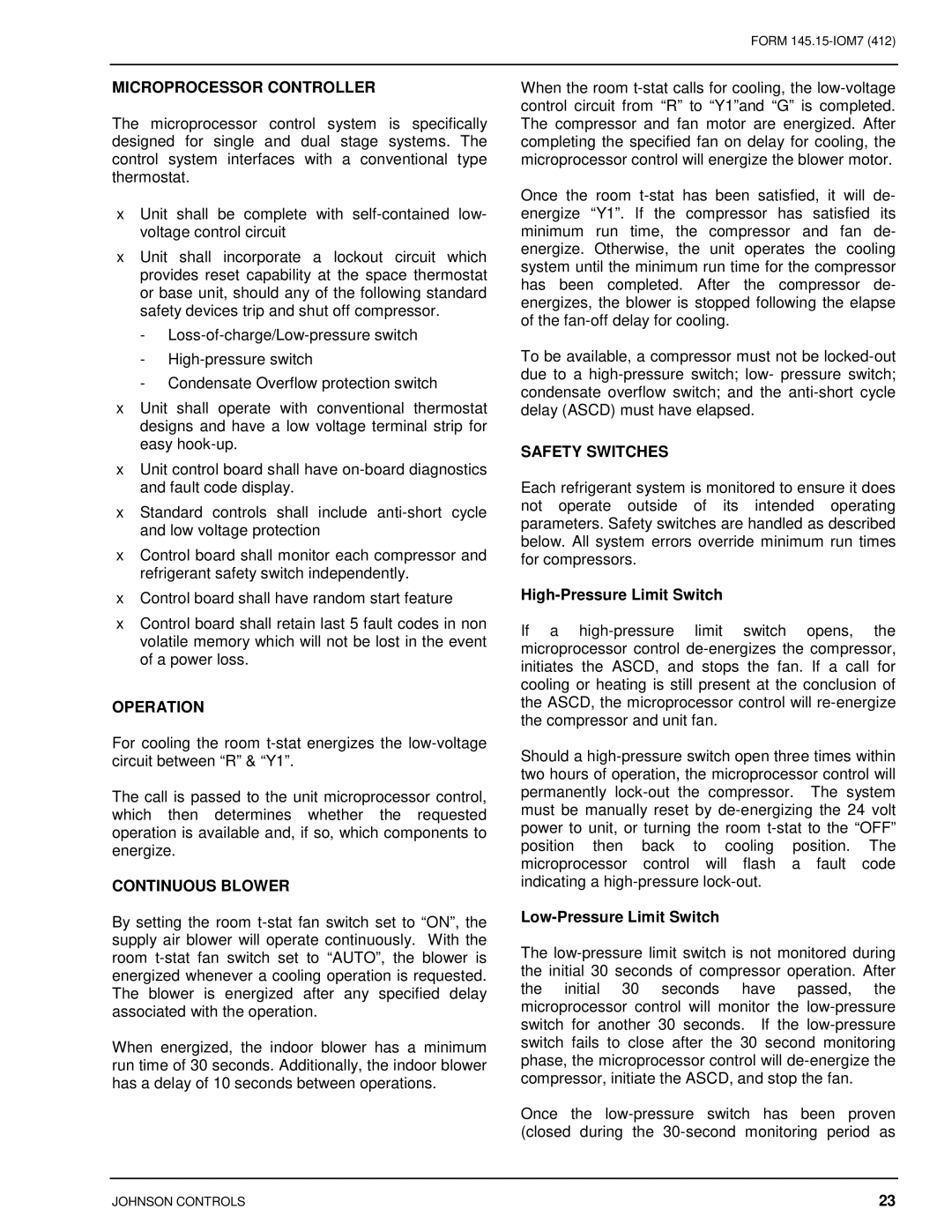CSV060B-240B specifications
The Johnson Controls CSV060B-240B is a cutting-edge packaged rooftop air conditioning unit designed for commercial applications, renowned for its energy efficiency, reliability, and advanced technological features. This model exemplifies the balance between performance and sustainability, making it a prime choice for businesses seeking effective climate control solutions.One notable feature of the CSV060B-240B is its variable speed compressor technology. This innovative design allows the unit to adjust its cooling output in response to real-time demand, which significantly enhances energy efficiency. By operating at lower speeds during moderate cooling loads, the system consumes less energy while maintaining consistent indoor comfort. This not only reduces operational costs but also minimizes the environmental impact associated with energy consumption.
In addition to its variable speed compressor, the CSV060B-240B is equipped with advanced intelligent controls. These controls enable users to integrate the unit into building management systems, allowing for seamless monitoring and adjustments. Features such as remote connectivity and smartphone integration provide added convenience, allowing facility managers to optimize system performance from anywhere.
Another key characteristic of the CSV060B-240B is its robust construction designed for durability and easy maintenance. The unit comes with a weatherproof cabinet, which protects internal components from harsh environmental conditions. This design extends the lifespan of the unit and reduces downtime due to maintenance or repairs. Additionally, the access panels are strategically placed to facilitate easy servicing, making it user-friendly for maintenance personnel.
The CSV060B-240B also emphasizes quiet operation, making it ideal for environments where noise levels need to be kept in check, such as hospitals, schools, and offices. Enhanced sound insulation and the use of a quiet fan design contribute to a more pleasant indoor atmosphere.
Overall, the Johnson Controls CSV060B-240B stands out in the market due to its combination of energy efficiency, smart technology, durability, and quiet operation. It is an excellent investment for businesses aiming to enhance their HVAC systems while adhering to sustainability practices and ensuring the comfort of their occupants. The CSV060B-240B not only meets the demands of modern commercial spaces but also sets a new standard for HVAC performance and innovation.

